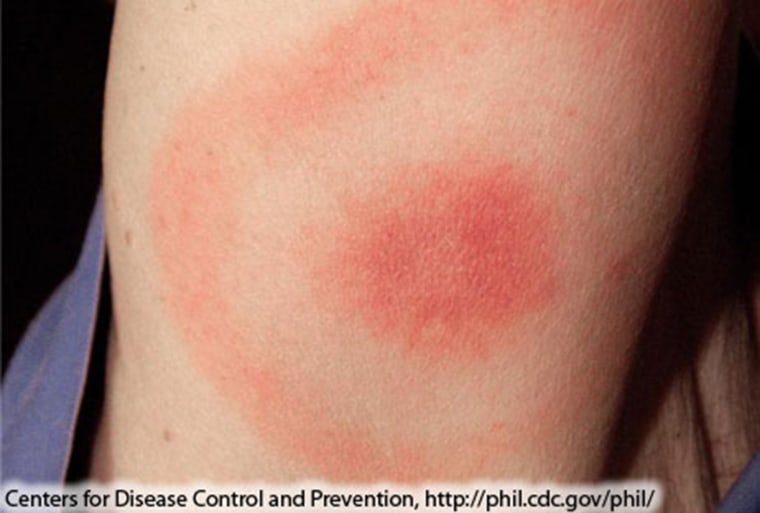Most people with Lyme disease are cured by antibiotics, but a certain percentage go on to have lasting symptoms even though it looks like all bacteria have been wiped out. A new study suggests lingering symptoms may be due to an immune system malfunction triggered by the original infection.
Using a mouse model to explore what could be happening to unlucky patients, researchers discovered that an infection with the Lyme bacteria, Borrelia burgdorferi, could spark an aberrant immune reaction in which cells that normally target specific pathogens become activated in a more general way. In other words, the body is attacking itself.
“I grew up in Vermont and Lyme disease affected people all around me,”said the study’s lead author Sarah Whiteside, a graduate student at the University of Utah. “It was far worse for those people that continued to suffer even after antibiotic treatment.”
Of the more than 300,000 Americans who contract Lyme disease each year, about 10 percent continue to suffer from symptoms after treatment with antibiotics, which can include arthritis, fatigue and mental fogginess.
Whiteside was hoping to find an explanation for those prolonged symptoms. The lab research indicates an out-of-whack immune response could be what’s responsible for the persistent symptoms in chronic Lyme disease patients.
In the new study, mice specially designed to explore this kind of question were infected with the Lyme bacteria. The researchers watched to see how the rodents’ T-cells — the scouts of the immune system in both people and mice—would respond to infection in the joints.
“We could not detect the expected T cell response that targets the [Lyme] bacterium,” said coauthor Janis Weis, a professor in the department of pathology in the division of microbiology and immunology at the University of Utah. “Instead, and to our surprise, we found that many T cells were activated but with no specific target. This T cell response was sufficient to eliminate the bacteria from the joint tissue, but the arthritis persisted for 18 weeks, and would probably have gone on much longer if the experiment had continued.”
'This is a real illness'
The new research may at least give some comfort to those who have been suffering from symptoms long after their Lyme disease was treated.
For many years, patients with persistent symptoms were told it was all in their heads. But these days, scientists are learning that “this is a real illness,” said Dr. John Aucott, a Lyme specialist and an associate professor of medicine at the Johns Hopkins University School of Medicine.
Aucott’s own recent study found that even though people with post-treatment Lyme disease syndrome (PTLDS) didn’t test differently from healthy people, they still suffered from a panoply of nasty symptoms. “A lot of people in the past said they aren’t sick, but we showed they are,” Aucott said. “And it’s not just aches and pains.”
Aucott, who is not affiliated with the Utah research, suspects that the new model may apply to more than just arthritis. The model is showing that the immune system can become very dysfunctional in some people, he said.
If you think of the immune system as an army, this non-directed attack could be seen as “friendly fire,” Aucott said. “You don’t want a guy who is shooting in every direction because then you can get friendly fire damage.”
Ultimately the research may help scientists find better treatments for PTLDS. It’s possible that short courses of immune suppressing drugs might quiet things down long enough to make a difference, Weis said.
“Patients wouldn’t always be immunosuppressed, Weis said. “Quieting of the inflammation might allow everything to reset.”

Many people do develop one or more of the common signs of Lyme after being infected by a tick. According to the Centers for Disease Control and Prevention, these symptoms include:
3 to 30 days after tick bite:
- Fever, chills, headache, fatigue, muscle and joint aches and swollen lymph nodes
- Rash, which begins at the site of the tick bite after a few days. It expands gradually and sometimes resembles the classic bull's-eye appearance.
Days to months after tick bite:
- Severe headaches and neck stiffness
- Additional rashes on other areas of the body
- Arthritis with severe joint pain and swelling, particularly the knees and other large joints
- Facial palsy
- Pain in tendons, muscles
- Heart palpitations or irregular heart beat
- Dizziness or shortness of breath